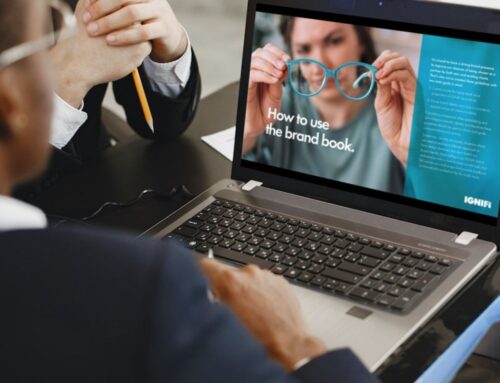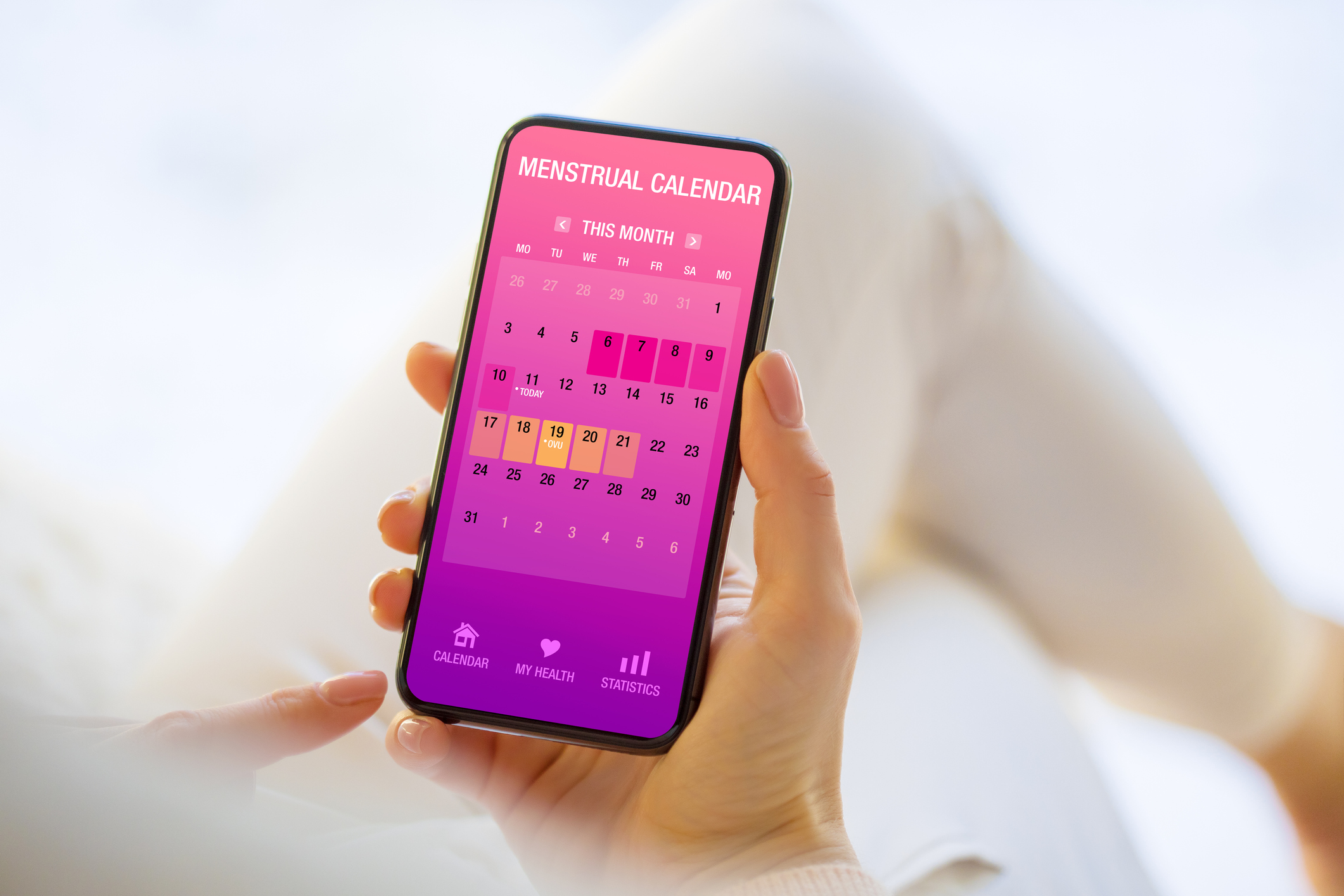
Over the past few months, we’ve posted a series of articles on the gender health gap and the common pitfalls in healthcare communications when it comes to women. So far, we’ve discussed the difficulties women have faced accessing contraception over the past year, women’s experience of the COVID-19 vaccine development and rollout and the ways in which the pandemic has worsened gender inequality.
However, while there are definitely issues that need to be addressed when it comes to women’s experience of healthcare, there are companies and industries that are getting it right. As we discussed in our previous blog, femtech (or female-technology) is an up-and-coming industry that is putting women’s experiences of lifestyle and health front and centre.
In this blog, we’re discussing five ways that femtech is improving the healthcare experience for women.
1. It empowers women to better understand their own bodies
We already know that it is a common occurrence for women to feel dismissed or misunderstood by their healthcare providers.1–3 While this is a serious issue that needs to be addressed, femtech companies are looking for ways to alleviate the issue in the meantime.
For example, apps such as menstrual cycle trackers can help people to understand the patterns of their own hormone cycles. Users are first asked to input dates of their menstrual periods along with information on their symptoms. Over time the apps will then use this data to be able to predict the dates of each phase of the menstrual cycle. This personalised data can then be used for features such as:
Predicting and better understanding period symptoms
Pregnancy planning and contraception
Some menstrual cycle trackers, along with dedicated fertility apps can be used to predict which days of the month are your ‘fertile window’, which can then be used to improve your chances of conception.
Alongside recording the dates of your periods, the app Natural Cycles uses extra inputs such as daily basil body temperature, allowing their internal AI to predict your fertile window with more confidence. This has allowed the app to market itself as a form of digital contraception for those looking to avoid pregnancy.
Creating exercise regimes tailored to your current hormone levels
Jennis is an app, founded by Dame Jessica Ennis-Hill, that uses cycle-tracking to recommend a personalised daily exercise regime. The goal is to maximise psychological benefits and physical gains by suggesting the form of exercise that will be most beneficial (be it strength training, stretching, cardio etc.) at different stages during your cycle.
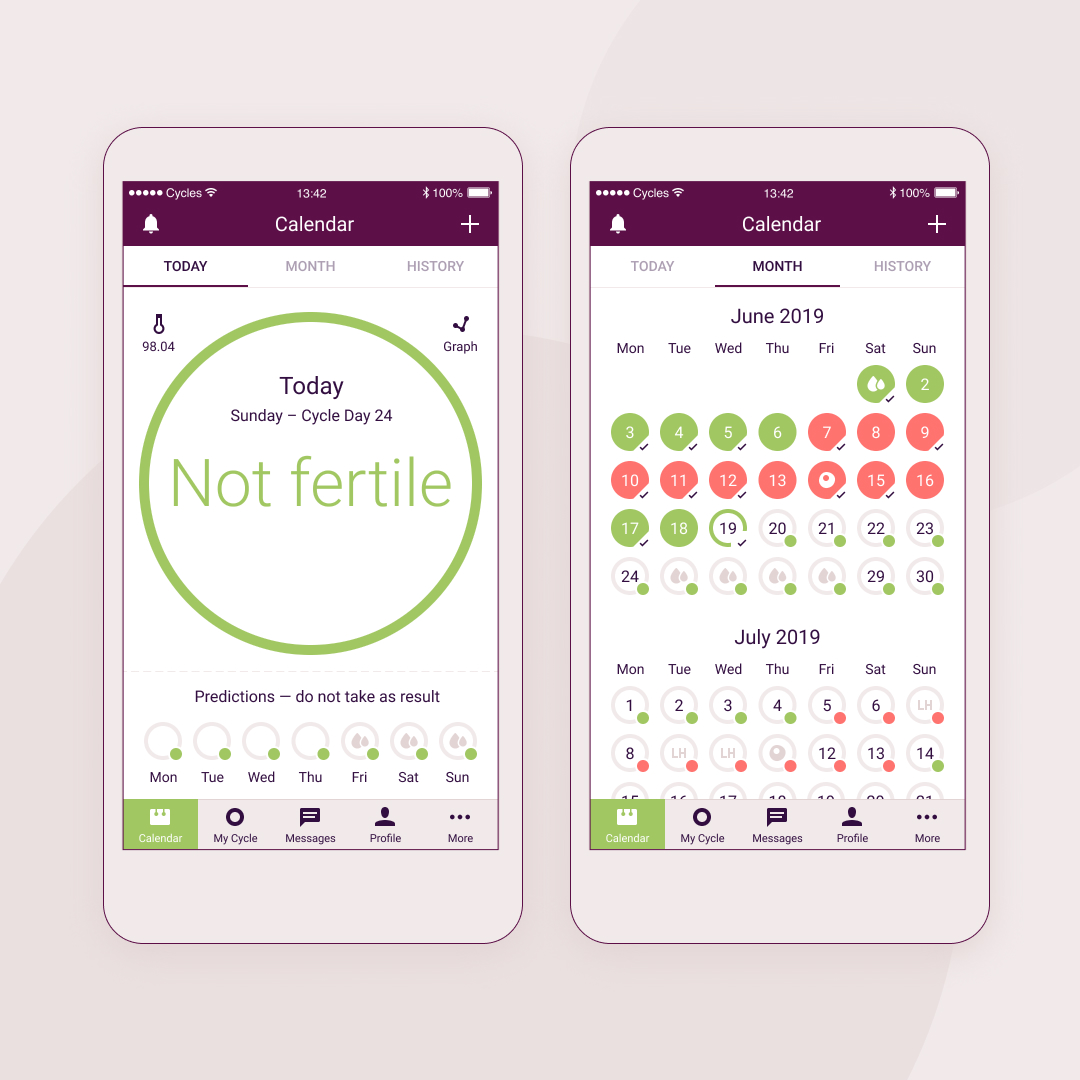
The app Natural Cycles is designed to be used as a digital form of contraception, using a simple colour coding system to indicate which days the user is at risk of pregnancy
(Image from Natural Cycles)
2. It’s taking women’s perspectives into account
In an industry that often leaves women feeling ignored, femtech puts women front and centre. A great example of this is the leading femtech brand Elvie, who pride themselves on improving long neglected areas of women’s health, designing alternative products with women’s lifestyles in mind.
Case study: redesigning the pelvic floor trainer
Elvie first entered the market with a pelvic floor trainer. Despite being an uncomfortable topic of conversation for many, pelvic floor disorders are surprisingly common: affecting 1 in 3 women at some point during their lives.4 Although studies have shown that pelvic floor exercises can lead to a substantial improvement in symptoms,4 the issue is that women don’t always adhere to these exercises in the long-term.5 Evidence also showed that the existing products created to improve adherence, did not appear to make a difference.6,7
The Elvie trainer was designed specifically to address this issue. The device incorporates biofeedback into an at-home device with an accompanying app which uses gamification and visualisation techniques to both encourage long-term adherence but also provide women with reassurance that they are doing the exercises correctly.8 The product was such a success that it is now offered to affected women via the NHS.9
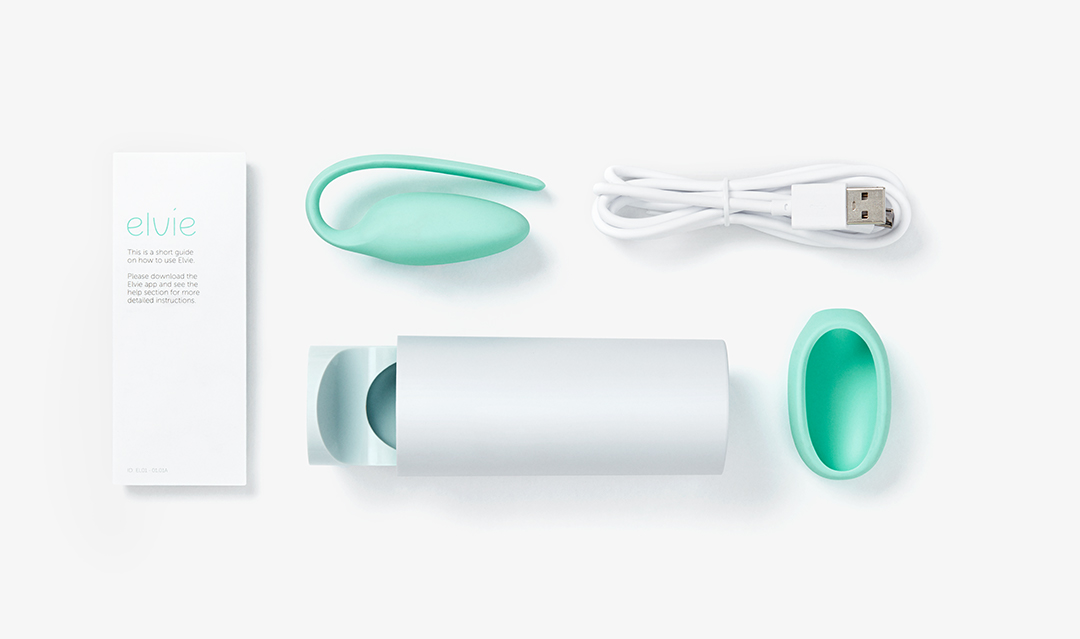
For the design of their pelvic floor trainer, Elvie steered away from the more medical appearance of the existing technology, choosing a packaging style more similar to that of the technology or fitness tracking industries.
(Image from Elvie)
3. It’s providing women with personalised advice and a sense of community outside of a healthcare setting
For those struggling to feel heard by their existing healthcare providers when it comes to women’s health, there are a wide range of Femtech apps providing advice and consultations with women’s health experts, accessible via smartphone. There are two key areas where we believe these apps can be extremely useful:
Pregnancy and breastfeeding
We discussed in our recent MAGNIFI: ‘Gender inequality: how COVID-19 impacted women’ how the pandemic has made pregnancy and postpartum a very isolating time for Mums across the globe. From attending doctors’ appointments alone throughout their pregnancy,10 to the absence of in-person baby groups and classes, support networks for new mothers have been disbanded.11 This lack of community then makes tasks such as navigating breastfeeding for the first time a lot more difficult – this is an area where femtech might be able to help.
LactApp is a breastfeeding companion app which was designed in Spain and is now used by 19% of Spanish new mothers. The app uses AI to give personalised breast-feeding advice 24h-hours a day, 7 days a week.
Menopause
Menopause is another area of women’s health that is often considered taboo but where extra support is greatly needed. As discussed in our 2020 edition of MAGNIFI: ‘What’s missing in women’s health?’, menopause is poorly understood by the general public but also healthcare professionals. For example, the mental symptoms such as brain fog can be extremely debilitating but are rarely talked about.12
Apps such as Stella and Alva are designed specifically to provide extra support for women going through menopause, providing resources such as personalised advice and even video consultations with experts on the subject—giving women access to someone who they know will take their symptoms seriously.

4. It’s addressing the big risks for women
As the femtech landscape is expanding beyond its initial focus on menstruation and reproduction, it’s turning its attention to other unmet needs in women’s health, like improving the standard of care for some of the major conditions affecting women:
Breast cancer
Breast cancer is the most commonly occurring cancer in women. A diagnosis of breast cancer is a life changing moment. Even when treatment is successful, women are left to deal with the aftermath, including the psychological impact or even learning to feel comfortable with their body following mastectomy.
Lattice Medical is a biomedical start-up that specialises in soft-tissue reconstruction. They’re currently working to make the process of recovering from a mastectomy as simple as possible, through designing a 3D printed breast implant that can help rebuild a woman’s breast tissue. The implant will then fully degrade within a year, so no invasive removal surgery is needed.15
Cervical cancer
This is the fourth most common cancer in women globally but also one of the most successfully treated if caught early and managed properly.13
Mobile ODT is a femtech company using smartphones and AI to help improve the process of cervical screening; making it easier to carry out screenings quickly and at scale, by a broader range of healthcare providers. They are even working with the WHO, helping them towards their goal of eliminating cervical cancer – their first ever plan to eliminate a cancer!14
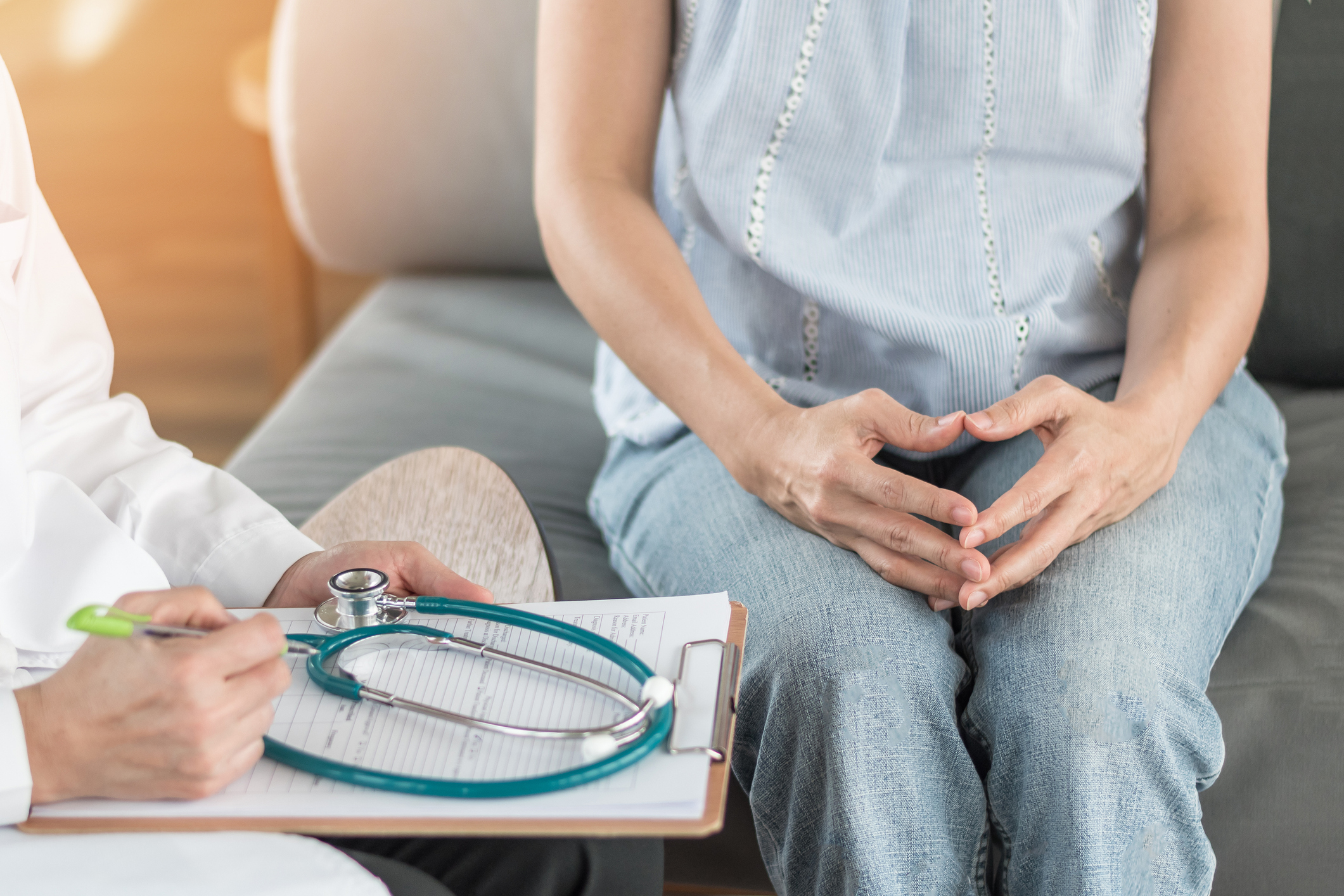
5. It’s bridging the gender data gap
As we mentioned in our recent blog ‘Why the COVID-19 vaccines are a women’s health issue’, there is a concerning lack of healthcare data on women, particularly pregnant women. This is an issue that is cultivated throughout the whole process of medical research from the use of male animals or male-derived cells in preclinical studies,16 all the way to the clinical trial process.
In clinical trials, gender analysis is often omitted,17 pregnant women are for the most-part excluded,18 and it was only in 1993 that the inclusion of women in clinical trials actually became mandated by the national institutes of health (NIH) following a ban by the US FDA.19
Now that we are seeing an increase in the popularity of femtech apps and wearables, we are generating huge amounts of data on women’s health and lifestyles, across countries and cultures.
The implications of this, particularly in the future treatment of poorly understood conditions such as endometriosis, are extremely promising. The SORA app from Syrona Heath allows women to track their gynaecological and general health symptoms, with a particular emphasis on those struggling with either endometriosis or polycystic ovary syndrome (PCOS). The app even incorporates gamification in order to promote retention amongst its users – could we use apps such as this to improve knowledge around these conditions?
Menstrual tracking apps often ask women to record the symptoms that they experience during their period along with a wide range of other physical changes.
(Image from Clue)
The future of femtech
While femtech is definitely taking a step in the right direction by finally listening to the perspectives of women, we now need the wider healthcare industry to follow suit. On top of this, the femtech industry also has some issues it needs to iron out in terms of regulation, funding and privacy.
Despite this, the huge success and growth of the femtech industry along with the uptake of women’s health related apps and devices highlights the key unmet need in this area. Hopefully, the success of femtech will act as a catalyst for change within both medicine and healthcare marketing.
For more content on women’s health, digital healthcare, marketing best practice and much more, visit our blog.


